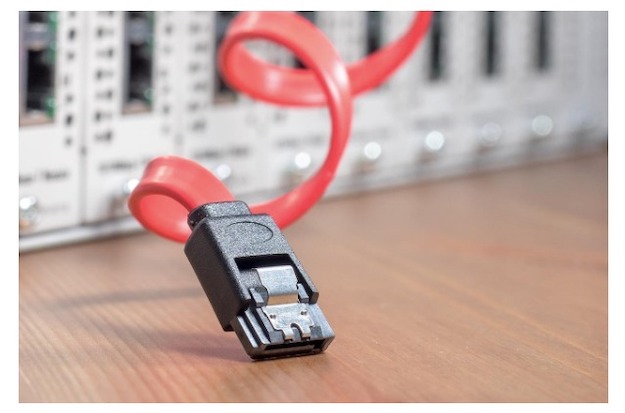In the modern age, a crucial part of the infrastructure that keeps the word going is the network. Networked machines, whether wired or wireless, are part of how life is now. We access electronic suppositories of data on a regular basis, we send crucial communications via streams of bits and bytes, and we store memories in digital form on systems that rely on robust and maintained access to networking technologies.
However, few people understand just what sorts of cables maintain the infrastructure of this network. There are multiple types of cords, cables, and connections that are used to maintain the networking we enjoy in the modern age. Here’s a quick breakdown on what these cables are and a broad idea of the roles they play in how things work.
The Purposes of These Cables
First, let’s look into what these cables do. In the most general terms, they are meant to connect one piece of hardware to another. They act as a means of transferring something, typically data, between those devices. In networking setups, you’ll find three broad categories of cables. These categories are the coaxial, the fiber optic, and the twisted pair.
1. Twisted Pair
Twisted pair cabling uses two conductors of a single circuit, which is then twisted together. The wires used contain opposite signals, which causes disruption to the signal. The twisting allows for reducing this crosstalk between the lines. Despite these issues, twisted pair cables are used because they are low-cost alternatives to coaxial and fiber optic.
Shielded vs Unshielded
Twisted pair networks will have shielding to prevent electromagnetic interference, which is a problem in these types of cabling setups. However, it is not impossible to find a UTP – an unshielded twisted pair.
For shielded pairs or STPs, they will either have an overall shield or one used individually. Individual shielding uses aluminum foil to provide protection for each quad or pair. Overall shielding uses a shield that will usually be braided across all pairs, preventing interference from entering or exiting the cable itself. It is possible for an STP cable to have one or both of these types.
If you use UTP, expect more interference. These are likely to see use in systems that are indoors, such as telephone lines. Outdoor phone cables contain up to thousands of these pairs. The wires are selected carefully, to minimize the amount of crosstalk and interference that occur.
Don’t Miss-
3 Types of USB Cables and Understanding their Uses
Thinking of Buying a USB Cable on the Internet? Here’s What You Should Know!
2. Coaxial Cables
Coaxial cables come in various types, but the one most familiar to the average consumer would be the type used by home cable companies. A coaxial cable is a tubular insulating layer covering an internal conductor. Surrounding the insulation is a conducting shield. The inner conductor and outer shield share an axis, for improved transmission. Most types will have an insulating outer jacket as well.
Coaxial cables are used as transmission lines for radio frequency signals, allowing them to be used as feedlines for various transmitters. Receivers of these signals include antennas, computer network hardware, cable television, and digital audio.
For the best cables, the signals are carried by an electromagnetic field in the space between the inner and outer conductor layers. This allows them to be installed near metal objects without losing any power or experiencing interference, common issues in other types of radio transmission.
Connectors
Coaxial cables have multiple types of connectors, which all see use in different industries. For instance, the use of these cables for RF and microwave industries would be different from the ones that are more concerned with audio, video, and digital transmission. A related concern is a connect-disconnect cycle and how much of this it could withstand and still perform according to expectations.
3. Optical Fiber/Fiber Optic
The final type is the fiber optic cable, or sometimes known as the optical fiber cable.
If you ever wondered how does fiber optic internet work and what makes fiber so special-Optical fiber is one of the best transmission medium available, boasting a high data capacity and not losing signal strength over long distances. This is crucial in any long-distance network, making this cable type indispensable in laying connections between cities or even countries. The key to this is the use of light as the medium of transmission since light doesn’t diminish over distance the way electrical signals do.
The inner fiber of the cable can be single or multimode. A single mode cable is useful for high-speed transmissions. Multimode cables, on the other hand, has stronger performance over shorter distances. Both have their uses and both retain signal strength over long distances.
Connector Types
A final detail about optical fiber cables is that they can terminate in various types of connectors. These connectors allow them to go into the ports of various devices, giving them flexibility in their final use. Of the types, the most common are LC, SC, and ST types.
There is also a fourth type, the MTP/MPO connector used by multi-fiber setups. These are designed for truly high bandwidth uses, allowing for direct connections into 40G and 100G transceiver systems. These are used primarily for high-density fiber distribution systems.
Conclusion
These three types of cables are part of the foundation of modern network technology. Each of them sees use in various functions, with some overlap between them. Knowing their strengths and core features let people use them appropriately and put together a better, more robust network.

